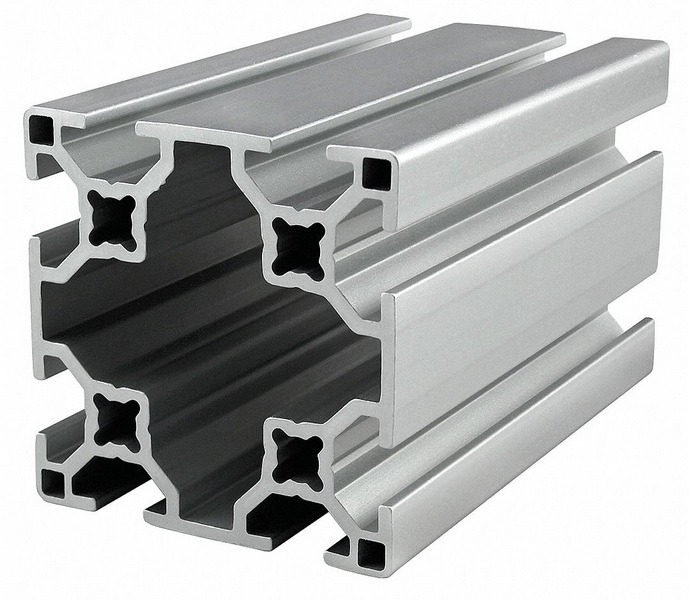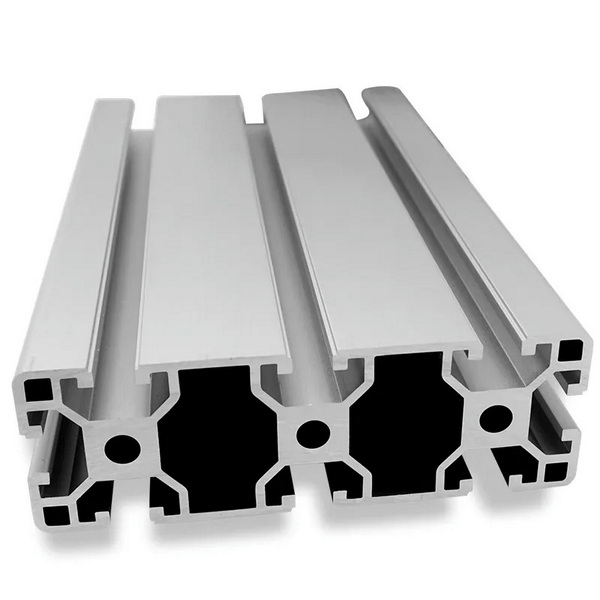Content Menu
● Understanding Aluminum Extrusions
>> Benefits of Aluminum Extrusions
● Weight Capacity of 20x20 Aluminum Extrusions
>> General Load Capacity Guidelines
● Applications of 20x20 Aluminum Extrusions
● Factors Affecting Weight Capacity
>> 1. Material Properties
>> 2. Cross-Sectional Design
>> 3. Connection Methods
>> 4. Environmental Factors
● Testing and Certification
● Design Considerations for Load-Bearing Applications
● Conclusion
● Frequently Asked Questions
>> 1. What is the maximum load a 20x20 aluminum extrusion can support?
>> 2. What material is commonly used for 20x20 aluminum extrusions?
>> 3. Can 20x20 aluminum extrusions be used in outdoor applications?
>> 4. How can I connect 20x20 aluminum extrusions?
>> 5. Are there any weight limits for dynamic loads on aluminum extrusions?
Aluminum extrusions are widely used in various industries due to their lightweight, strength, and versatility. Among the many sizes available, the 20x20 mm aluminum extrusion profile is particularly popular. This article will explore the weight capacity of 20x20 aluminum extrusions, their applications, and factors affecting their load-bearing capabilities.

Understanding Aluminum Extrusions
Aluminum extrusion is a process that shapes aluminum alloy into a desired cross-sectional profile. The process involves forcing heated aluminum through a die, resulting in long lengths of material that can be cut to size. The 20x20 mm profile is part of the 20 Series T-slot aluminum extrusions, which are characterized by their square shape and T-slot design, allowing for easy assembly and modification.
Benefits of Aluminum Extrusions
1. Lightweight: Aluminum is significantly lighter than steel, making it easier to handle and transport.
2. Corrosion Resistance: Aluminum naturally forms a protective oxide layer, making it resistant to corrosion.
3. Versatility: The T-slot design allows for easy integration with other components, making it suitable for various applications.
4. Strength: Despite its lightweight nature, aluminum can support substantial loads, especially when designed correctly.
Weight Capacity of 20x20 Aluminum Extrusions
The weight capacity of a 20x20 aluminum extrusion depends on several factors, including:
- Material Grade: The most common aluminum alloy used for extrusions is 6063-T6, known for its good mechanical properties and corrosion resistance. Other grades may offer different strength characteristics.
- Length of the Extrusion: Longer extrusions may have lower weight capacities due to increased deflection.
- Load Distribution: The way the load is applied (centralized vs. distributed) significantly affects the capacity. Centralized loads tend to create more stress at the center of the extrusion.
- Support Conditions: How the extrusion is supported (e.g., at both ends, cantilevered) will influence its load-bearing ability.
General Load Capacity Guidelines
While specific load capacities can vary, a general guideline for 20x20 aluminum extrusions is as follows:
- Static Loads: For static loads, a 20x20 aluminum extrusion can typically support around 100-200 kg (220-440 lbs) when supported at both ends, depending on the specific conditions mentioned above.
- Dynamic Loads: For dynamic loads, such as those encountered in machinery or moving applications, the capacity may be reduced due to the additional stresses involved.

Applications of 20x20 Aluminum Extrusions
The versatility of 20x20 aluminum extrusions makes them suitable for a wide range of applications, including:
- Industrial Automation: Used in the construction of frames for machines and conveyor systems.
- Furniture: Commonly used in the design of modular furniture and workstations.
- Robotics: Ideal for building lightweight robotic structures and supports.
- Display Stands: Frequently used in trade shows and exhibitions for creating display stands and booths.
- DIY Projects: Many hobbyists and makers use 20x20 aluminum extrusions for custom projects, such as 3D printer frames and workbenches.
Factors Affecting Weight Capacity
1. Material Properties
The specific alloy used in the extrusion process can significantly impact the weight capacity. For instance, 6063-T6 aluminum is commonly used for its excellent strength-to-weight ratio. Other alloys, such as 6061, may offer higher strength but can be more challenging to extrude. The choice of alloy should be based on the specific requirements of the application, including environmental conditions and load expectations.
2. Cross-Sectional Design
The design of the extrusion itself plays a crucial role in its load-bearing capacity. The T-slot design allows for additional structural components to be added, which can enhance the overall strength of the assembly. The geometry of the profile can also affect how loads are distributed across the extrusion, influencing its performance under stress.
3. Connection Methods
How the extrusions are connected to each other or to other components can also affect their load capacity. Using brackets, fasteners, or welding can provide additional support and stability. Proper connection techniques are essential to ensure that the load is evenly distributed and that the assembly can withstand the intended forces.
4. Environmental Factors
Environmental conditions, such as temperature and humidity, can affect the performance of aluminum extrusions. For example, extreme temperatures may alter the material properties, impacting its load-bearing capabilities. Additionally, exposure to corrosive environments can weaken the aluminum over time, so protective coatings or anodizing may be necessary for certain applications.
Testing and Certification
To ensure that aluminum extrusions meet safety and performance standards, manufacturers often conduct load testing. These tests help determine the maximum load the extrusions can safely support under various conditions. Certifications from recognized organizations can also provide assurance of the material's quality and performance. It is advisable to consult with manufacturers or suppliers for specific load ratings and testing results relevant to your application.
Design Considerations for Load-Bearing Applications
When designing structures using 20x20 aluminum extrusions, several considerations should be taken into account to optimize performance:
- Deflection Limits: Engineers often specify deflection limits for structural components. For aluminum extrusions, a common guideline is to limit deflection to 1/1000 of the span length. This ensures that the structure remains stable and functional under load.
- Safety Factors: Incorporating safety factors into the design can help account for unexpected loads or conditions. A common practice is to use a safety factor of 1.5 to 2.0, meaning the design should be able to support 1.5 to 2 times the expected maximum load.
- Load Path Analysis: Understanding how loads will be transferred through the structure is crucial. A thorough load path analysis can help identify potential weak points and ensure that all components are adequately supported.
Conclusion
In summary, the weight capacity of 20x20 aluminum extrusions is influenced by various factors, including material grade, length, load distribution, and support conditions. Generally, these extrusions can support significant loads, making them suitable for a wide range of applications in industrial and commercial settings. Understanding the specific requirements and conditions of your project will help you determine the appropriate aluminum extrusion for your needs.

Frequently Asked Questions
1. What is the maximum load a 20x20 aluminum extrusion can support?
Typically, it can support around 100-200 kg (220-440 lbs) when properly supported.
2. What material is commonly used for 20x20 aluminum extrusions?
The most common material is 6063-T6 aluminum, known for its good strength and corrosion resistance.
3. Can 20x20 aluminum extrusions be used in outdoor applications?
Yes, aluminum is naturally corrosion-resistant, making it suitable for outdoor use.
4. How can I connect 20x20 aluminum extrusions?
They can be connected using brackets, fasteners, or by welding, depending on the application.
5. Are there any weight limits for dynamic loads on aluminum extrusions?
Yes, dynamic loads typically require a lower weight capacity due to additional stresses involved.
Come and contact us to shop! ! !



















